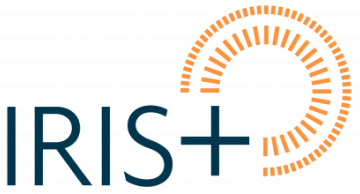
Sonen’s multi-manager investment approach aims to achieve appropriate portfolio diversification by providing access to high-quality impact strategies. The benefits of our integrated investment and impact expertise include:
Just as Sonen’s Impact Investing Spectrum illustrates various approaches to impact creation through distinct investment activities, impact measurement and reporting vary across these approaches and among different asset classes. Sonen’s impact reporting captures these variations and provides both quantitative and qualitative information, with examples of underlying investments that typify what our portfolios contain.
Our impact reporting integrates industry best practices and standards, such as the IRIS+ taxonomy of impact indicators and the UN Sustainable Development Goals. In 2018, Sonen won an award for Best Impact Report (for asset managers under $25B), and in 2022 Sonen was awarded a Wealth for Good Award for Best Sustainability and ESG Thought Leadership with a Global Reach. All of our reports are shared publicly in Thought Leadership.
As noted in our Impact Investing Spectrum, Sustainable Investing entails the active integration of Environmental, Social and Governance (ESG) factors into investment decisions. Such data is now so available that investors can evaluate a wide breadth of company performance along extra-financial dimensions, such as carbon emissions, workforce wellbeing, or board diversity.
Sonen evaluates and reports the ESG characteristics of our portfolios across eight ESG key performance indicators, and we are proud to share these results publicly in our Annual Impact Report, now in its ninth consecutive year of publication. Our ESG monitoring can easily identify where any investment may be underperforming (at the portfolio level, amongst industry peers, or at the individual security level) or where related ESG issues may indicate a related impact risk.
A sample of our ESG reporting is below, illustrating the carbon performance of Sonen’s Global Equity strategy relative to its conventional market benchmark, the MSCI AWCI IMI. Data for the last nine years reveals consistent outperformance, with respect to carbon emissions, for Sonen’s Global Equity strategy. Other “Environmental” performance indicators include water use.
CHART DATA: MSCI ESG Research 12/31/2021. Measuring and comparing intensity allows for a comparison between companies with significantly different scales of operations and/or market capitalizations. At the time of publishing FY2020 represents the latest available year of data from MSCI ESG Research. Not every company included in these indices reports on carbon emissions, toxic emissions, water withdrawal or other ESG data. Each of these charts reflects available data for the portfolio and its respective benchmark. The above data represents past performance. Current and future results may significantly differ than prior results.
Similarly, Sonen monitors and reports board gender diversity. As evident in the chart below, Sonen’s Global Equity strategy maintains greater board diversity compared to its market benchmark consistently for the last nine years. Other governance performance indicators include board ethics and board independence.
CHART DATA: MSCI ESG Research 12/31/2021. The above data represents past performance. Current and future results may significantly differ than prior results
Sonen monitors and reports three distinct “Social” performance indicators, including labor management (worker compensation, benefits and professional development); health and safety (worker wellbeing and injuries); and controversial sourcing (the extent to which supply chains are verified to exclude conflict minerals).
Thematic investing presents an opportunity for investors to gather specific, quantitative data on the impact performance among investments that focus on a specific social or environmental issue. Sonen reports Thematic impact in two principal ways:
First, Sonen characterizes Thematic investments’ business activities according to an internal Thematic typology. This chart illustrates the thematic impact within Sonen’s Global Public Equity strategy.
Thematic investments, particularly in private markets, also allow investors to gather specific quantitative impact data related to individual themes.
The above data represents past performance. Current and future results may significantly differ than prior results
For example, Sonen’s investments in Green Real Estate measures and evaluates four key performance indicators, each of which informs the extent to which Sonen is achieving its stated impact outcomes for our Sustainable Real Assets investment strategy:
Amount of Energy Saved or Conserved as a Result of Property Improvements (KwH)
The above data represents past performance. Current and future results may significantly differ than prior results
Total area (m2) that benefits from sustainability enhancements
The above data represents past performance. Current and future results may significantly differ than prior results
Total number of units
The above data represents past performance. Current and future results may significantly differ than prior results
Percent of properties with third party sustainability certifications.
The above data represents past performance. Current and future results may significantly differ than prior results
Total Renewable Energy Produced
The above data represents past performance. Current and future results may significantly differ than prior results
Total GHGs avoided emission
The above data represents past performance. Current and future results may significantly differ than prior results
Number of people with access to clean energy
The above data represents past performance. Current and future results may significantly differ than prior results
Energy production by type
The above data represents past performance. Current and future results may significantly differ than prior results
Total Land under sustainable management
The above data represents past performance. Current and future results may significantly differ than prior results
Perm conserved land
The above data represents past performance. Current and future results may significantly differ than prior results
Total Sustainable timber sold
The above data represents past performance. Current and future results may significantly differ than prior results
Total native tree species planted
The above data represents past performance. Current and future results may significantly differ than prior results
Area of adjacent protected land
The above data represents past performance. Current and future results may significantly differ than prior results
Ecological restoration management area
The above data represents past performance. Current and future results may significantly differ than prior results
Operational sustainability certifications
The above data represents past performance. Current and future results may significantly differ than prior results
Length of streams present
The above data represents past performance. Current and future results may significantly differ than prior results
Volume of water
The above data represents past performance. Current and future results may significantly differ than prior results
Number of clients
The above data represents past performance. Current and future results may significantly differ than prior results
Number of pipeline repairs
The above data represents past performance. Current and future results may significantly differ than prior results

Sonen uses the Impact Reporting and Investment Standards (IRIS) library of impact indicators from the Global Impact Investing Network (The GIIN). IRIS is a set of standardized impact indicators that ensures uniformity among impact data collected from underlying investments. Such uniformity of data allows for direct comparisons between investments, as well as the ability to aggregate impact data across similar investments. Sonen’s principals are among the first users of the IRIS library of impact indicators and have helped contribute to its formation and evolution.

Sonen also reports how its various investments (at individual security level as well as at fund and portfolio levels) contribute to the SDGs. The 17 SDGs include more than 230 underlying indicators that are used to measure progress toward global social, economic, and environmental sustainability by the year 2030.
Unlike most investors, Sonen measures alignment with the SDGs not only by the Goals’ broad objectives, but also by how our investments report on specific, quantitative impact indicators that are suggested by the UN. We believe this approach provides a more authentic and accurate test of an investment’s contribution to the respective SDGs. In 2015, Sonen was pleased with the introduction of the UN Sustainable Development Goals (SDGs), and was among the first, if not the first-organizations to report portfolio-level contributions to the SDGs.
101 Montgomery Street
Suite #2150
San Francisco, CA 94104
+1 (415) 534-4444
info@sonencapital.com